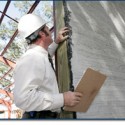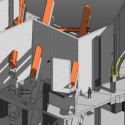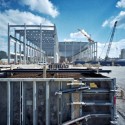 A few weeks ago, I published a post based on my presentation at the Melvin Belli Seminar on Tort Practice, which focused on a three-step process for attorneys to develop graphics from the very start of their case to “build the visual foundation” for it. This post is a follow-up that looks at the specific area of law involving construction defect work. I’ll show you how to build the visual foundation of a construction defect case by preserving visual information in a convenient format that can be easily updated as the case progresses.
A few weeks ago, I published a post based on my presentation at the Melvin Belli Seminar on Tort Practice, which focused on a three-step process for attorneys to develop graphics from the very start of their case to “build the visual foundation” for it. This post is a follow-up that looks at the specific area of law involving construction defect work. I’ll show you how to build the visual foundation of a construction defect case by preserving visual information in a convenient format that can be easily updated as the case progresses.
For those attorneys who practice in the construction defect area of law, how often are you faced with this dilemma: You are trying to prepare your case for mediation, and you have a hard drive full of photographs of the site from all different sources; it’s unclear what the photos show, where the scene is located, or even when the photograph was taken. You may have reams of images that look something like the example below, without any context for understanding. [Read more...]

 Yesterday was one of those days that reminded me of the value of visiting a site for a construction-related case to see and feel firsthand what is involved. Couldn’t I simply hire a photographer to take pictures of it for me instead? Perhaps, but that’s a poor substitute. It’s much more effective to tour the scene with the lead attorney and experts, as well as with our firm’s in-house architect to tap into his expertise about the building’s design and standard construction practices.
Yesterday was one of those days that reminded me of the value of visiting a site for a construction-related case to see and feel firsthand what is involved. Couldn’t I simply hire a photographer to take pictures of it for me instead? Perhaps, but that’s a poor substitute. It’s much more effective to tour the scene with the lead attorney and experts, as well as with our firm’s in-house architect to tap into his expertise about the building’s design and standard construction practices. When it comes to construction issues, I feel like the actor in that old ad on TV who says, “I’m not a doctor, but I play one on TV.” I’m not in the construction field, but I litigated construction cases for over a decade and consequently couldn’t help but develop an expertise in construction standards and practices. In a similar way, some med-mal attorneys I know have a better understanding of proper standard of care than even doctors do. When you have to prosecute or defend a case that revolves around highly technical issues, you’re sure to learn the subject inside and out.
When it comes to construction issues, I feel like the actor in that old ad on TV who says, “I’m not a doctor, but I play one on TV.” I’m not in the construction field, but I litigated construction cases for over a decade and consequently couldn’t help but develop an expertise in construction standards and practices. In a similar way, some med-mal attorneys I know have a better understanding of proper standard of care than even doctors do. When you have to prosecute or defend a case that revolves around highly technical issues, you’re sure to learn the subject inside and out.



Follow Cogent Legal
Subscribe by Email